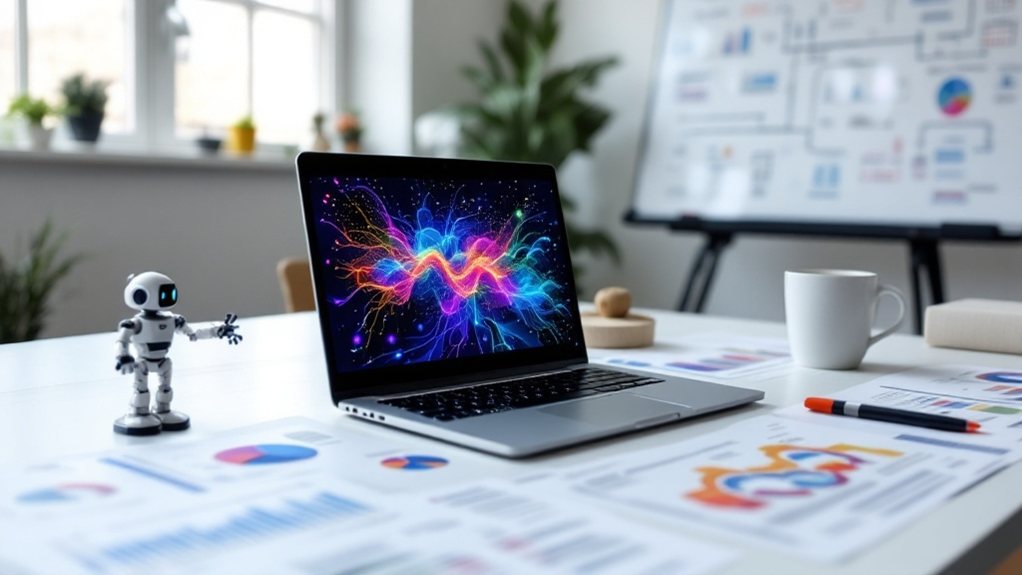AI and privacy? It’s kind of a mess. Imagine your face, voice, and inbox collected silently, then shuffled through algorithms that may or may not treat everyone fairly (spoiler: often not). Security leaks mean your info could star in a future cybercrime sitcom. Regulations are playing catch-up, so don’t expect the rulebook to save you. Even the companies running the show can’t always explain where your data goes. Curious about which “minor” details you should care about next?
Transparency? Not AI’s strong suit. These systems are notorious for collecting, processing, and passing around personal info with all the subtlety of a reality TV camera crew. If you’re wondering what happens next, well, sometimes even the companies behind the curtain don’t know. AI encompasses various techniques such as machine learning, predictive analytics, natural language processing, and robotics.
AI handles your personal data with all the finesse of a reality TV crew—and even its creators can lose track of what happens next.
Lack of transparency makes it tough to tell whether your data is being used to serve you better, or just to serve up more ads (or, you know, sell your details to the highest bidder).
Of course, there are the classic villains: hackers and data breaches. As AI systems become more complex and interconnected, the risk of unauthorized access skyrockets. One breach, and suddenly your identity is out there—ripe for theft, fake profiles, or worse.
And with AI’s love affair with biometric data (think facial recognition), it’s not just your email at risk—your face might be making cameo appearances in places you never visited. AI systems are data-driven, which means the more data they consume, the more potential privacy risks they introduce for individuals and groups.
Let’s not forget the bias baked into algorithms. Sometimes, AI decides certain groups are more interesting than others. That can mean targeted ads, sure, but also targeted discrimination, amplifying privacy concerns for already vulnerable populations.
The push for algorithmic fairness must balance innovation with protecting individual privacy rights.
Regulation? Still catching up. The rules are vague, the borders are blurry, and keeping up with AI’s evolution is like chasing a caffeinated squirrel.









